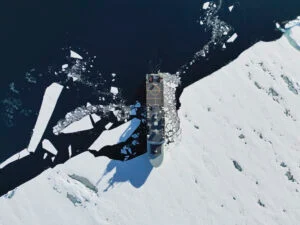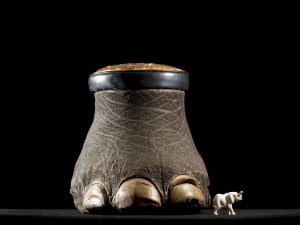
People & Culture
On thin ice: Who “owns” the Arctic?
As the climate heats up, so do talks over land ownership in the Arctic. What does Canadian Arctic Sovereignty look like as the ice melts?
- 4353 words
- 18 minutes
This article is over 5 years old and may contain outdated information.
Wildlife

It’s the largest migration on Earth by biomass: every night, billions upon billions of microscopic zooplankton rise from the ocean’s depths to feed in the safety of darkness. When the sun rises, they return to the deep to avoid predators.
Scientists have long wondered how this migratory cycle functions in the perpetual darkness of Arctic winter. Now, a study by the Scottish Association for Marine Science (SAMS) has found the answer: even under thick layers of ice, the zooplankton are motivated by moonlight.
The researchers used echo sounders fixed to the ocean floor to monitor movement, and found the zooplankton migrate in concert with the phases of the moon. When the moon is dark or below the horizon, the zooplankton rise to the surface; when the moon is above the horizon, they sink. Once a month, when the moon is bright and full, the zooplankton dive en masse to a depth of about 50 meters.
The scientists believe that this schedule helps the zooplankton avoid light-dependent predators, including the voracious crustacean Themisto libellula, which feeds on the tiny marine animals.
This lunar response was recorded across the entire Arctic, at all water depths, ice covered and open.
Lead study author Dr. Kim Last said the findings have huge implications for monitoring the health of Arctic ecosystems in the face of climate change. Zooplankton play an important role in the ocean’s carbon cycling and are a dietary staple of many marine species, from crustaceans to cod to whales.
“We now have a completely different perception of the Arctic and the polar night,” Last said. “We’d expected there to be nothing happening at this time of year when it’s incredibly cold and totally dark for months on end, and yet we now know the moon drives these migrations probably because of predators.”
As Arctic ice recedes, more light will penetrate the ocean, which could trigger an imbalance in the ecosystem.
Check out this video for more on SAMS’ zooplankton findings and methodology:
Are you passionate about Canadian geography?
You can support Canadian Geographic in 3 ways:

People & Culture
As the climate heats up, so do talks over land ownership in the Arctic. What does Canadian Arctic Sovereignty look like as the ice melts?

Environment
The uncertainty and change that's currently disrupting the region dominated the annual meeting's agenda

Wildlife
An estimated annual $175-billion business, the illegal trade in wildlife is the world’s fourth-largest criminal enterprise. It stands to radically alter the animal kingdom.

History
Games were started in 1970 to give northern athletes more opportunities for training and competition